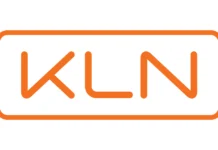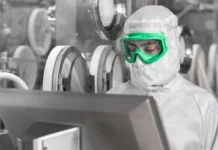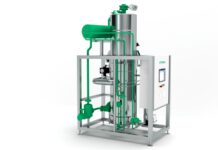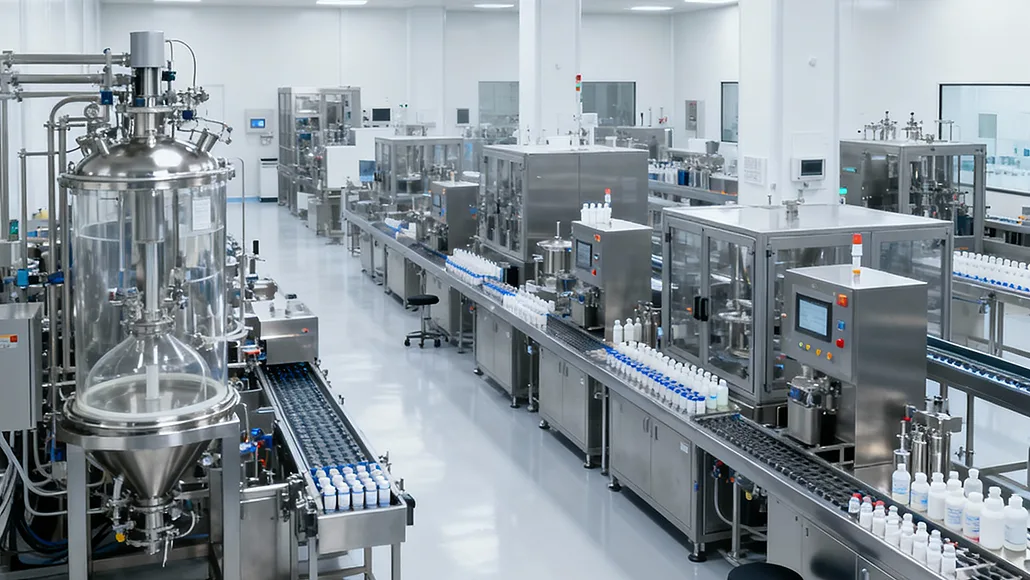The pharmaceutical industry is experiencing a fundamental shift away from the traditional “blockbuster drug” model toward increasingly sophisticated precision medicine manufacturing strategies that prioritize individual patient needs over mass-market volume. This transformation represents far more than a simple adjustment to product portfolio or distribution channels; it fundamentally reimagines how medicines are conceived, developed, manufactured, and delivered. Precision medicine manufacturing demands that organizations rethink every aspect of their operations—from research and development through clinical trials, regulatory pathways, and ultimately to the point of care where highly personalized therapies reach individual patients.
The precision medicine market is projected to reach USD 463.11 billion by 2034, growing at an accelerating pace as genomic technologies mature, artificial intelligence becomes more sophisticated, and healthcare systems worldwide embrace patient-centric care models. This exponential growth trajectory reflects the healthcare industry’s recognition that one-size-fits-all approaches increasingly fail to deliver optimal outcomes. Instead, precision therapies tailored to individual genetic profiles, disease subtypes, and patient characteristics are demonstrating superior efficacy, reduced adverse effects, and ultimately, better health outcomes. However, this clinical promise introduces unprecedented manufacturing complexity that traditional pharmaceutical facilities were never designed to accommodate.
The Transformation from Blockbuster to Patient-Centric Models
Understanding the Manufacturing Paradox
Traditional pharmaceutical manufacturing operates on principles of standardization and economies of scale. Large production runs minimize per-unit costs, optimize facility utilization, and create efficient supply chains designed to move products through global distribution networks. This approach works exceptionally well for treating common diseases where millions of patients require the same standardized therapy. However, precision medicine manufacturing operates under fundamentally different constraints. When therapies are tailored to individual patient characteristics—genetic profiles, disease mutations, immunological markers—the traditional paradigm of mass production becomes not just inefficient but practically infeasible.
The manufacturing paradox at the heart of precision medicine involves simultaneously achieving three often-contradictory objectives: maintaining the exceptional quality standards required for personalized therapies, producing small batches efficiently without unit cost escalation, and ensuring rapid turnaround to prevent treatment delays. Patient-centric production systems must be flexible enough to accommodate varied formulations, specifications, and delivery mechanisms while maintaining regulatory compliance and operational efficiency. Johnson & Johnson’s investment in “Flex Factories”—smaller, highly automated production facilities capable of rapid changeovers between different precision therapies—achieved a 50% reduction in time-to-market for personalized treatments while maintaining rigid quality standards.
The Economics of Smallness
Traditional economic analysis suggests that manufacturing at smaller scales inevitably results in higher per-unit costs due to reduced efficiency and economies of scale. However, emerging precision medicine manufacturing demonstrates that this conventional wisdom requires fundamental revision. The integration of advanced technologies including modular manufacturing units, continuous production systems, automation, and data analytics creates new economic models where small-batch production achieves surprising efficiency.
Decentralized manufacturing represents a particularly promising approach to precision medicine economics. Instead of centralizing production in massive facilities serving global markets, this model deploys smaller, automated manufacturing units closer to patient populations. This approach simultaneously reduces logistics costs, minimizes supply chain complexity, shortens time from production to patient, and improves flexibility to accommodate local regulatory variations. Several biopharmaceutical companies have successfully piloted distributed manufacturing networks where individual nodes produce therapies for regional patient populations, creating a resilient, responsive ecosystem rather than a centralized, vulnerable supply structure.
Technologies Enabling Precision Medicine Manufacturing
Modular and Adaptive Manufacturing Platforms
Modular manufacturing represents the technological foundation enabling successful precision medicine production. Unlike traditional dedicated production lines optimized for a single product, modular systems comprise standardable building blocks that can be rapidly reconfigured for different products, batch sizes, and manufacturing processes. These platforms integrate process analytical technology, automated quality control systems, and real-time monitoring capabilities that ensure each batch meets rigorous specifications regardless of scale or formulation complexity.
Continuous production systems further enhance precision manufacturing efficiency by eliminating batch-to-batch transitions and maintaining steady-state operating conditions optimized for product quality. These systems can process diverse product types with minimal downtime between changeovers, reducing production complexity while improving product consistency. Advanced control algorithms powered by machine learning continuously optimize production parameters in real time, ensuring that small-batch production achieves quality equivalent to or exceeding large-scale manufacturing.
Digital Integration and Computational Manufacturing
The successful implementation of precision medicine manufacturing increasingly relies on sophisticated digital infrastructure that integrates computational modeling, real-time process monitoring, and adaptive control systems. Digital twins of manufacturing processes enable manufacturers to simulate different operating scenarios, predict quality outcomes, and optimize parameters before implementation in physical systems. These computational capabilities allow even small-batch productions to benefit from the extensive process understanding typically achieved only through massive production volumes.
Artificial intelligence and machine learning systems analyze manufacturing data to identify patterns, predict equipment performance, and recommend process optimizations specific to each product variant. This computational intelligence effectively transfers the insights gained from large-scale production into small-batch contexts, enabling precision medicine manufacturing to achieve remarkable efficiency and consistency despite reduced production volumes.
Advanced Quality Control and Personalization
Real-time release testing powered by advanced analytics eliminates the traditional need for extended laboratory testing before batch release. In-process monitoring combined with predictive modeling enables manufacturers to verify product quality and release batches immediately upon completion rather than weeks later after comprehensive laboratory testing. This capability becomes particularly critical for time-sensitive precision therapies where treatment delays directly impact patient outcomes.
Additive manufacturing and 3D printing technologies are emerging as particularly promising tools for precision medicine manufacturing. These technologies enable production of patient-specific drug formulations, customized dosage forms, and even individualized medical devices designed for specific anatomical characteristics. While currently limited to specific applications, the trajectory of these technologies suggests they will play increasingly important roles in realizing the full potential of precision medicine manufacturing.
Key Metrics Comparing Blockbuster and Precision Medicine Manufacturing
| Metric | Traditional Blockbuster | Precision Medicine | Impact |
| Batch Size | 1000-10,000 units | 1-100 units | Reduced per-batch overhead |
| Production Flexibility | Single product, limited variants | Multiple variants, rapid changeover | Enhanced market responsiveness |
| Time to Patient | Weeks/Months via distribution | Days via regional production | Improved therapeutic timeliness |
| Quality Testing | Post-production laboratory validation | Real-time in-process monitoring | Faster batch release |
| Manufacturing Sites | Large centralized facilities | Distributed modular networks | Supply chain resilience |
| Cost Structure | Per-unit reduction with volume | Reduced total cost despite smaller volume | Economic viability of personalization |
Regulatory and Organizational Implications
Precision medicine manufacturing introduces novel regulatory considerations that agencies worldwide are actively developing frameworks to address. Manufacturing processes for personalized therapies with patient-specific characteristics raise questions about how to define consistent product specifications, validate manufacturing processes with limited batch experience, and maintain audit trails documenting customization parameters. Forward-thinking regulatory agencies including the FDA are developing adaptive regulatory frameworks that acknowledge the unique characteristics of precision therapies while maintaining unwavering commitment to patient safety and product quality.
Organizational structures within pharmaceutical companies must evolve to support precision medicine manufacturing. Traditional siloed functional organizations where research, development, manufacturing, and commercial teams operate with limited integration prove inadequate for supporting complex precision medicine workflows. Leading organizations are restructuring toward integrated end-to-end teams organized around therapeutic areas or patient populations rather than functional expertise. This organizational transformation, while challenging, creates aligned incentives and facilitates the collaborative problem-solving essential for successful precision medicine implementation.
The Future: From Personalization to Systemic Integration
The transition from blockbuster to precision medicine manufacturing represents not merely a technological evolution but a fundamental restructuring of how the pharmaceutical industry creates value for patients. Success requires simultaneous innovation across multiple dimensions: manufacturing technologies, regulatory frameworks, organizational structures, and business models. Companies that master this complex transition will establish competitive advantages in markets increasingly dominated by precision therapies. Those that cling to traditional manufacturing paradigms risk obsolescence as precision medicine becomes the standard of care across an expanding range of therapeutic areas.
Patient-centric production systems promise extraordinary benefits: improved treatment efficacy through therapies optimized for individual characteristics, reduced adverse effects by avoiding inappropriate treatments, shortened development timelines through adaptive trial designs, and ultimately, superior healthcare outcomes measured by the metrics that matter most to patients. The precision medicine manufacturing transformation, while complex, represents an evolution toward healthcare systems fundamentally aligned with human biology and individual patient needs rather than statistical averages and population-level optimization.




















